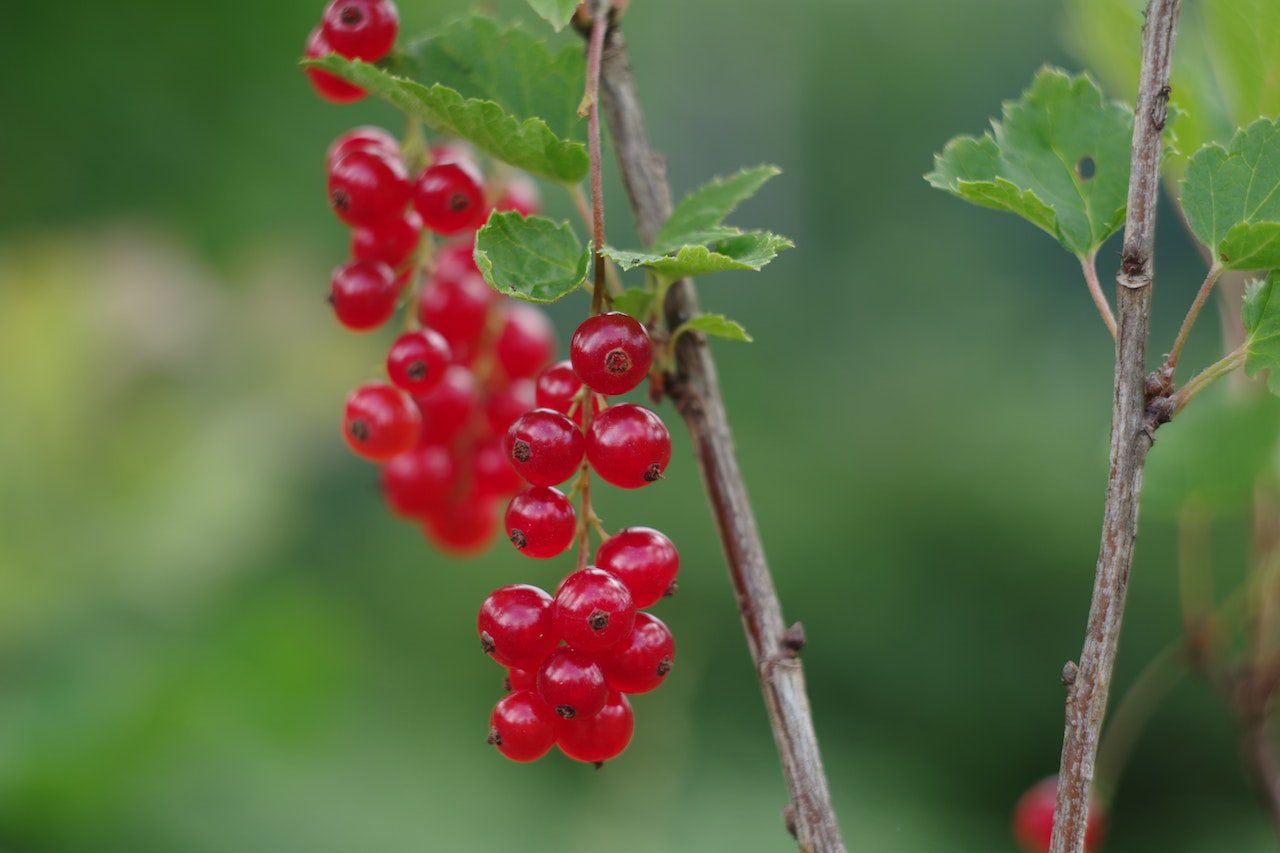Get The Most Out of Your Currants from Backyard Eats
Harvesting Currants
When It’s Ready
- Observe the color and texture: Currants come in various colors, including red, black, and white. Harvest them when they are fully colored and plump.
- Check for a slight softness: Gently squeeze a few currants, and they should yield slightly without being too mushy.
- Taste test: Sample a berry to ensure it has reached the desired level of sweetness or tartness.
- Summer, usually from June to July
When It’s Too Late
- Overripe currants become soft, discolored, and may start to decay.
- Regularly inspect your currant bushes to avoid missing the optimal harvest time.
How To
- Hold the currant cluster gently in one hand.
- Use your other hand to strip the currants from the stems by running your fingers along the cluster, removing the berries.
- Place the harvested currants carefully in a shallow container, being mindful not to crush them.
- Remove any stems or debris from the harvested currants.
About Currants
Currants are shrubs that grow 5-8 ft tall. They require partial to full sun to thrive, but not trellising or frequent pruning.
Flowering/Fruiting Tendencies
Currants are native to Europe. They come in red, pink and black varieties and produce small yellow flowers, then 1/4-1/2″ fruits. Currants have medicinal properties and most taste great fresh eaten. They can be a little sour, so some people bake with them or juice them instead.
Design Notes
Currants have trouble in full sun and hot heat in early years, but produce more fruit in more sun. They do well in part sun too.
Care Notes
Currants benefit from compost and wood chip mulch in spring to promote growth. Typically, pruning involves just the removal of dead or dying canes.
Newly planted perennials require some additional care to help establish and support the plants as they grow. Water newly planted perennials deeply at the root 2-3 times a week during the first growing season. Apply compost and wood chip mulch in the late winter/early spring.
Storing Currants
Fresh Storage: Gently wash and dry berries, then place them in a breathable container lined with paper towels in the refrigerator for up to five days.
Long-Term Storage: Remove the stems and freeze the currants in a single layer on a baking sheet before transferring them to a freezer-safe container for up to a year.

Cooking With Currants
- Currant Jam: Cook currants with sugar and a squeeze of lemon juice until they break down and form a thick jam. Spread it on toast, scones, or use it as a filling for pastries and cakes.
- Currant Sauce: Simmer currants with sugar and a bit of water until they soften and release their juices. Strain the mixture to remove any seeds and use the sauce as a tangy topping for meats, poultry, or desserts.
- Currant Muffins or Scones: Fold currants into muffin or scone batter for a burst of tartness. The flavor of currants pairs well with the sweetness of baked goods, adding a delightful contrast.
- Currant Compote: Simmer currants with a bit of water and sugar until they soften and form a chunky sauce. Serve the compote warm or chilled as a topping for yogurt, pancakes, or ice cream.
- Currant Salad: Add currants to green salads or grain salads for a pop of tartness. Their vibrant color and tangy flavor can complement a variety of salad ingredients, such as greens, nuts, cheese, and vinaigrette dressings.
- Currant Coulis: Purée cooked currants and strain them to remove any seeds, resulting in a smooth sauce. Drizzle the coulis over desserts like cheesecakes, panna cotta, or custards for an elegant touch.
- Currant Cordial: Steep currants in a mixture of water, sugar, and optional spices to create a flavorful cordial. The resulting syrup can be used to make refreshing drinks, mixed with sparkling water, or added to cocktails.




